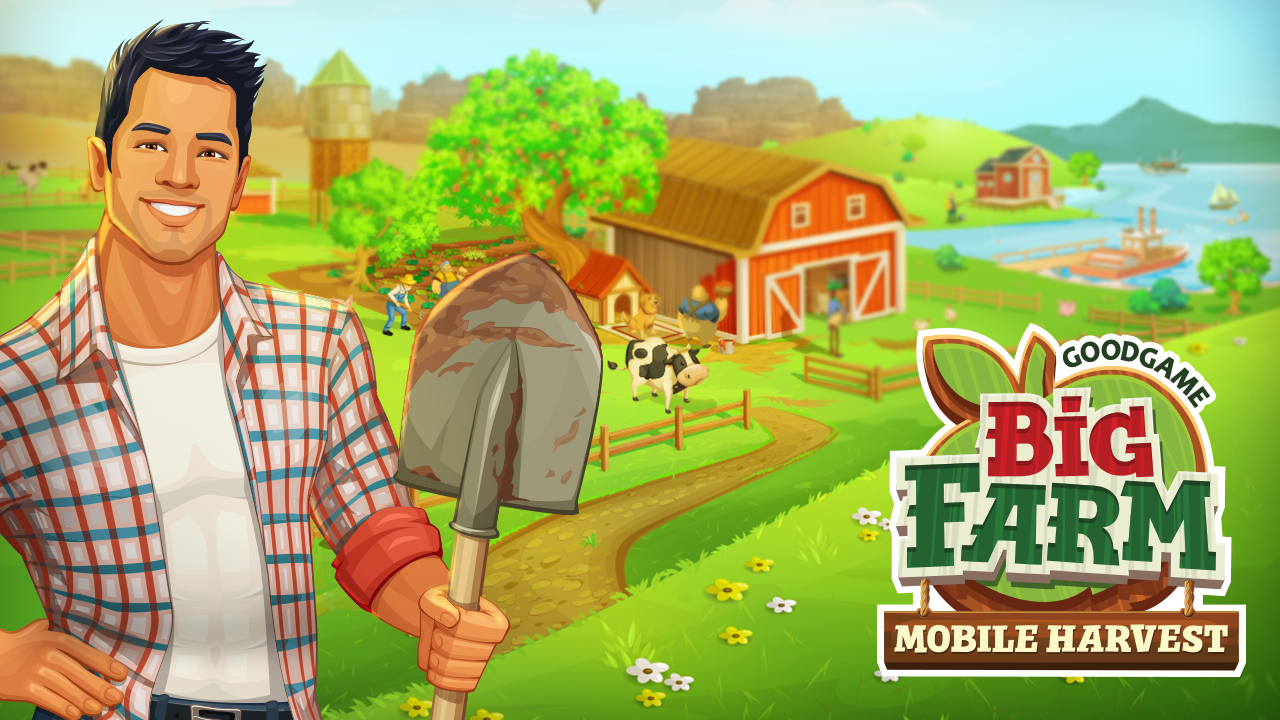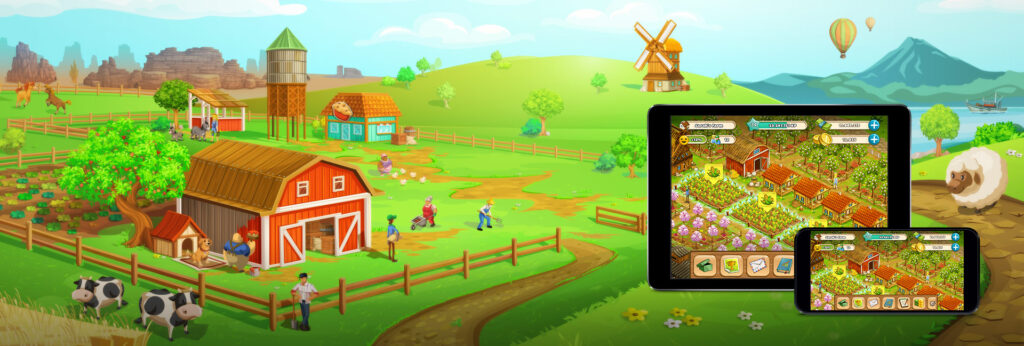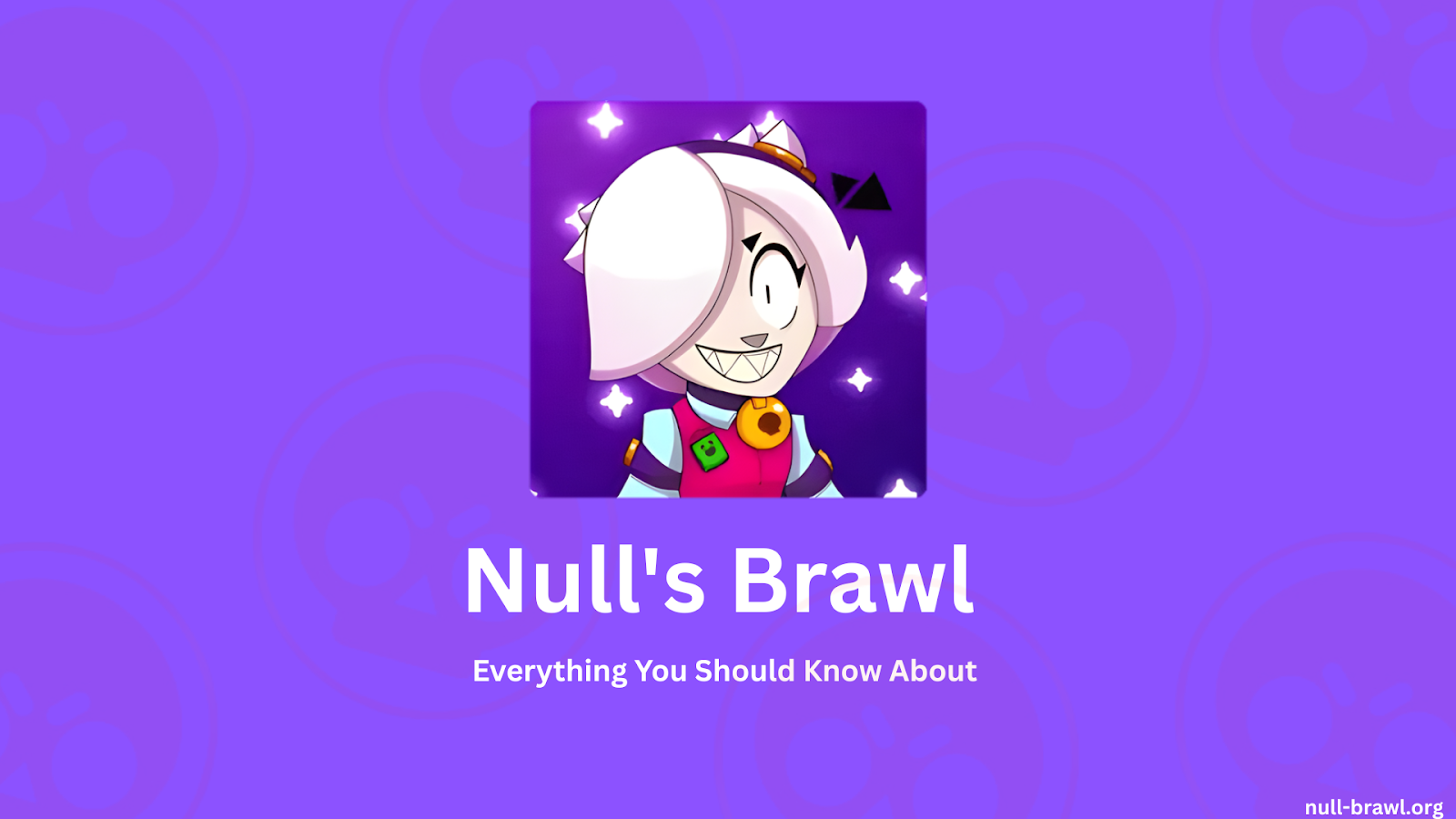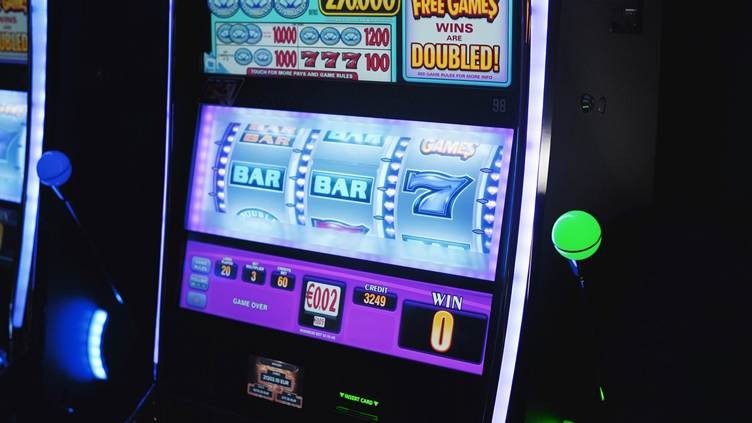Gaming
Big Farm
Explore Big Farm captivating world! Dive into strategies, challenges, and rewards. Make every farming tale uniquely yours. Join now!

Step right into a world where farming dreams come alive. Welcome to Big Farm! Imagine a place where the sun always shines and the fields are always green. That’s exactly what it offers. But don’t be fooled. This game is more than just planting seeds and watching them grow.
Every gamer knows the thrill of building something from scratch. And this game hands you the reins of a farm that’s seen better days. It’s your task to bring it back to its former glory. Right from the start, you’ll dive deep into the heart of farming life. Think big, plan wisely and watch as your farm expands beyond your wildest dreams.
But wait, there’s more! Not only do you get to grow crops, but you also manage livestock, trade goods, and interact with neighbors. All while enjoying delightful graphics that make every moment a visual treat. Plus, with every challenge you conquer, there’s a rewarding sense of accomplishment.
So, for those seeking a virtual escape to the countryside, Big Farm is your destination. With its blend of strategy, creativity, and pure fun, it’s no wonder players keep coming back for more. Dive in today and start your farming journey. After all, the fields of Farm are waiting. And trust me, once you start, it’s hard to stop. Join the community and see for yourself.
Mastering Big Farm: A Simple Guide to Gameplay and Controls
Have you ever wanted to manage your very own farm, complete with crops, livestock, and lovely neighbors? It lets you do just that, right from the comfort of your device. If you’re new to this fantastic world, don’t worry! This guide will walk you through the basics of playing this game, ensuring you have all the knowledge you need to run the most successful farm ever.
Diving into Gameplay: Unleash Your Inner Farmer

- Setting Up Your Farm: When you first start Big Farm, you inherit a farm that needs a little love. Your primary goal? Turn it into a thriving agricultural hub! Begin by clearing out any debris, fixing up old buildings, and preparing the soil for your first set of crops.
- Planting and Harvesting: Pick a crop, plant it, and watch it grow. But remember to water it and protect it from pests! Once it’s ready, harvest your produce and store it. The faster you harvest, the more profits you can reap.
- Raise Livestock: Farming isn’t just about plants! Buy animals, feed them regularly, and take care of them. In return, they’ll provide you with products like milk, eggs, or wool.
- Engage with Neighbors: It isn’t a solitary game. Interact with your virtual neighbors, trade goods, and even team up for bigger projects and challenges.
Understanding Controls: Commanding Your Farm Like a Pro
Click and Drag: The primary control is simple: use your mouse or touch screen to click on items and drag them where you want them to go. Whether you’re placing a new barn or plotting out your next field of carrots, it’s as easy as a click and a drag.
Using Menus: Look to the bottom or side of your screen for your main menu. This is where you’ll manage your inventory, check on your livestock, and monitor your farm’s overall progress.
Notifications and Alerts: Stay alert! Notifications will pop up to guide you, especially when crops are ready to harvest or when your animals need attention.
Climbing the Ladder: Unraveling the Levels of Big Farm
1. The Beginner’s Greenhouse: Every farmer starts somewhere. In Big Farm, the journey begins with the basics. Learn how to plant, harvest, and manage your initial resources. This is the foundation upon which all other levels are built.
2. The Livestock Ranch: Once you’ve got the hang of crops, it’s time to introduce some animals into the mix. This level lets you raise your first set of livestock, teaching you the nuances of animal care and product collection.
3. The Trading Tavern: Now that you have a bounty of products, why not trade? This level introduces the trading mechanism. Here, you’ll learn the art of business, from setting prices to striking deals with virtual neighbors.
4. The Expansion Era: Space becomes a premium as your farm grows. This level challenges players to strategically expand their land, deciding which plots to buy and how best to use them.
5. The Festival Fairground: Farming isn’t just hard work; there’s fun to be had too! In this level, players get to organize and participate in various farm festivals, attracting visitors and earning special rewards.
6. The Cooperative Community: Farming is more fun together. This level introduces players to the cooperative aspect of Big Farm. Join forces with fellow farmers, tackle challenges together, and grow your community.
7. The Elite Estate: For those who’ve mastered the art of farming, this level is the ultimate challenge. Here, players face advanced scenarios, tackle bigger projects, and can even mentor newer players in the Big Farm universe.
Master the Meadows: Top Tips and Tricks
1. Regular Check-ins: Big Farm runs in real-time. Regularly checking in ensures crops don’t wither and animals remain well-fed. The more attentive you are, the better your yields!
2. Prioritize Upgrades: Upgrading your buildings and equipment will streamline operations. Start with your main farmhouse and storage facilities, then branch out.
3. Diversify Your Crops: Don’t put all your eggs in one basket—literally! Planting a variety of crops ensures a steady income even if market prices fluctuate.
4. Attend to Animals: Animals are a valuable resource. Tend to them diligently to ensure consistent produce like milk, wool, and eggs.
5. Engage in Cooperative Missions: Collaboration can lead to bigger rewards. Team up with fellow players to tackle joint missions and share in the spoils.
6. Rotate Crops: Just like in real farming, rotating crops can keep the soil healthy. Change what you plant in each plot periodically to ensure optimal yields.
7. Optimize Space: Farm space is premium real estate. Make the most of every inch by strategically placing buildings and plots.
8. Save Gold for Crucial Purchases: Gold, the premium currency in Big Farm, is hard to come by. Save it for essential purchases or to speed up crucial tasks.
9. Engage in Events: Big Farm often hosts special events. Participate for a chance to earn unique rewards and bonuses.
10. Learn from Fellow Farmers: Join forums or Big Farm communities online. Sharing experiences and strategies with other players can provide invaluable insights.
Beyond the Fields: Unique Features that Set Big Farm Apart
1. Real-time Farming Dynamics: Big Farm operates in real-time. This means crops grow, animals age, and seasons change even when you’re away, mirroring the real-life unpredictability of farming.
2. Cooperative Gameplay: Unlike many farming games, Big Farm promotes teamwork. Join farming cooperatives, collaborate on projects, and reap shared rewards with fellow players.
3. In-depth Storylines: Dive into captivating storylines and engaging quests. Big Farm offers narratives that add depth to the gameplay, allowing players to be part of unfolding stories.
4. Farm-to-City Expansion: Why limit yourself to just the fields? Big Farm lets players expand beyond the rural setting, allowing ventures into the bustling city marketplaces.
5. Ecological Awareness: Big Farm emphasizes sustainable farming. Players are encouraged to use organic methods, implement water conservation, and more, subtly promoting eco-awareness.
6. Farm Design Freedom: Express yourself with unparalleled design flexibility. From the placement of buildings to choosing decorative elements, players can tailor their farm to reflect their style.
7. Global Trading: Engage in a worldwide marketplace. Trade crops, livestock, and crafted goods with players from around the world, teaching the nuances of global economics.
8. Regular Events and Festivals: Seasonal events, festivals, and special challenges keep the gameplay fresh. These events offer unique rewards and keep players engaged year-round.
Frequently Asked Questions
How can I earn gold in Big Farm?
Players can earn gold by leveling up, completing certain missions, participating in events, or through in-game purchases with real money.
Why are my crops withering?
Crops can wither if they’re not harvested in time. Regular check-ins and timely harvests ensure your crops remain healthy.
Can I play this game on mobile devices?
Yes, it has a mobile version called “Mobile Harvest” available for both Android and iOS devices.
How do I join or create a cooperative?
You can join a cooperative through the cooperative building on your farm. If you want to create one, you’ll need a specific amount of gold or dollars, which you can then use to establish your own cooperative.
What are the benefits of upgrading buildings?
Upgrading buildings improves their efficiency, capacity, and overall output. It can also unlock new features, reduce production times, and increase storage.
Planting the Final Seed
Diving into Big Farm opens doors to a world brimming with challenges and rewards. From sowing the first seeds to trading in global markets, the journey is captivating. And remember, every farmer writes their own story in this game. So gear up, explore and let your farming tales inspire many. With every sunrise on game, a new adventure awaits. Dive in and make it your own.
People Also Searched For
- Slope Unblocked Games
- Moto X3m
- 1v1.lol Unblocked 66
- Fireboy And Watergirl Unblocked
- Happy Wheels Unblocked Games
- Minecraft Unblocked Games 66
- Drift Hunters Unblocked
- Tunnel Rush Unblocked
- Eggy Car Unblocked 66
- Google Baseball Unblocked
- Fall Boys Unblocked
- Bouncy Rush
- Cookie Clicker Unblocked Games
- Pixel Combat 2
- Little Alchemy 2
- Subway Surfers Unblocked
- Planet Clicker 2
- Retro Bowl Unblocked
- Big Tower Tiny Square Unblocked
- Rooftop Snipers Unblocked
- Getaway Shootout Unblocked
- Papa’s Cheeseria
- Heardle Game
- Iron Snout Unblocked
- Basketball Legends
- Flappy Bird Unblocked
- Highway Racer
- Geometry Dash Unblocked
- Crazy Shooters
- Basketball Stars Unblocked
- Rummy Wealth
- Among Us Unblocked
- 8 Ball Pool Unblocked
- Garden Tales
- Mahjong Connect
- Coin Clicker
- Tetris Unblocked
- Chess Unblocked
- Stickman Hook Unblocked
- Mario Unblocked
- Tiny Fishing Unblocked
- Bob The Robber Unblocked
- Fortnite
- io Unblocked Games
- 2048 Unblocked
- Cricmania
- Smash Karts Unblocked
- Drive Mad Unblocked
- Tallman Run
- Monkey Mart
- Snow Rider 3D Unblocked
- Unblocked Games WTF
- Unblocked Games
- Crossy Road Unblocked
- Cat Ninja Unblocked
- Slither.io Unblocked
- Penalty Shooters 2
- Worlds Hardest Game Unblocked
- Vex 3 Unblocked
- Ping Pong Unblocked
- Backflip Maniac
- Unicycle Hero Unblocked
- Rocket League Unblocked
- Game Online Gratis
- 66 Unblocked Games
- Google Tic-Tac-Toe
- hole io unblocked
- FNF Unblocked
- Cricket Legends
- Pacman 30th Anniversary
- Pacman Unblocked
- Fly or Die
- Bitlife Unblocked
- Sausage Flip Unblocked
- Drift Boss Unblocked
- Madalin Stunt Cars 2 Unblocked
- Paper io Unblocked
- Granny Unblocked
- krunker.io unblocked
- G Switch
- Temple of Boom
- Shell Shockers Unblocked
- Eaglercraft
- Pocket Emo
- Rolling Ball 3D Unblocked
- Blackjack Unblocked
- Roblox Unblocked
- Traffic Jam 3D
- Tomb Runner
- Super Smash Flash 2 Unblocked
- Unblocked Games 911
- Yummy Tales 2
- Block Champ
- Dinosaur Game Unblocked
- Moto Road Rash 3D Unblocked
- Merge Fruit
- Cat Runner
- Love Tester 3
- Sniper 3D
- Woodoku
- Drunken Boxing
- Top Speed Racing 3D
- Mini Golf Game
- FNAF Unblocked
- Basketball Random Unblocked
- Happy Snakes
- Sugar Heroes
- Going Balls
- Bus Driver Simulator
- Vex 7 Unblocked
- Geometry Jump
- Sonic Mania Plus Mod APK Download
- A Small World Cup Unblocked
- The Mergest Kingdom
- Hungry Shark Arena
- Çeirir
- coin master free spins haktuts
- Bottle Flip Unblocked Games 66
- Pixel Speedrun Unblocked Games 66
- Poker – Unblocked Games 66
- Forest Match
- Dragon Ball Z Games Unblocked 66
- Assassin’s Creed Freerunners
- Asphalt Retro
- Celebrity Halloween Costumes
- Vex 8 Unblocked
- $200 No Deposit Bonus 200 Free Spins Real Money
Gaming
Unlock Endless Gaming Thrills with Free Credit Malaysia

In recent years, Online Casino Malaysia has evolved into a vibrant digital playground where technology, entertainment, and human curiosity intersect. But to understand why these platforms have captured so much attention, it helps to imagine the experience from the eyes of a first-time explorer. Picture someone stepping into a virtual world—not a physical casino with bright lights and echoing chatter, but a sleek digital realm filled with colors, animations, and endless choices. This explorer is not dressed in formal wear and does not need chips clinking in their pocket. Instead, the adventure begins with a tap on a screen.
The moment a player enters an online casino, the environment changes instantly. There is no line to wait in, no noise to push through. Instead, the screen unfolds into a gallery of games, each one illuminated like a portal to a different world. One game sends players into an ancient temple full of mysteries, another launches them into outer space with neon visuals and futuristic soundtracks. This variety is one reason Online Casino Malaysia has become such an appealing destination—there is always something new to discover, and the themes never stop evolving.
But what makes these platforms even more interesting is the sense of personalization. Unlike traditional casinos, where players walk through predetermined pathways, digital platforms rearrange themselves around the user. The interface adapts to your habits, remembering what games you explored, which sound settings you prefer, and what sort of themes seem to catch your eye. Some people want fast-paced action; others prefer strategy-driven table games that feel thoughtful and deliberate. The platform pays attention, creating a sense of being recognized within a massive digital universe.
A key element that adds spice to the experience is the structure of daily rewards. Each day feels like a treasure hunt—log in, and a new surprise might appear. These bonuses vary widely, from free spins to cashback rewards, and they create a rhythm that keeps the community engaged. Among these offers, the slot free credit Malaysia bonus stands out for new players because it gives them a risk-free chance to explore the world of slots. Instead of jumping in blind, players can sample the mechanics, graphics, and bonus features before deciding which games spark their imagination. This type of offer functions like a guided tour, allowing explorers to walk through unfamiliar terrain with a sense of comfort.
However, behind the vibrant digital façade lies a serious foundation built on technology and security. Every spin, card draw, or dice roll is governed by advanced algorithms ensuring fairness. Encryption layers protect sensitive data, making transactions secure. Players often underestimate the depth of engineering behind these platforms, but it is this invisible infrastructure that allows people to enjoy themselves without worry. Reputable platforms within Online Casino Malaysia adhere to strict licensing regulations, demonstrating that entertainment and safety can coexist without compromise.
Customer support adds a human touch to this digital world. Even though the platform is virtual, the people behind it are very real—game experts, technical troubleshooters, and support representatives ready to assist. Whether a player has questions about a promotion or simply wants to understand how a game works, help is available at all hours. This reliability turns the platform from a mere entertainment service into a community centered around comfort and convenience.
Another layer of excitement comes from live dealer games—a bridge between physical casinos and the digital age. These sessions unfold through real-time video streams, complete with professional dealers who interact with players through chat systems. The atmosphere feels lively and human, blending the thrill of a live table with the convenience of online access. For many players, this hybrid experience becomes their favorite part of Online Casino Malaysia because it delivers both social interaction and strategic gameplay.
The competitive spirit is alive here too. Online tournaments, leaderboard challenges, and seasonal events give players a chance to test their skills and luck against others. Whether it’s a week-long slot tournament or a special holiday event, the thrill of climbing the leaderboard adds a new dimension to the experience. Some players join purely for fun; others enjoy the strategy of timing, game selection, and bonus utilization. These events help build camaraderie—a sense that you’re part of something bigger than a solo gaming session.
Looking to the future, the horizon of online casinos stretches far into exciting territory. Developers are already experimenting with virtual reality experiences that allow players to walk through three-dimensional casino worlds as if they’re physically present. Imagine walking up to a digital roulette table, leaning in to place a bet, and watching the wheel spin right before your eyes. Augmented reality could take this even further, blending real surroundings with virtual elements. Artificial intelligence might eventually predict which games players will enjoy most or tailor promotions to suit personal gaming styles. The evolution of Online Casino Malaysia is not slowing down; it’s accelerating into a future filled with innovative storytelling, advanced immersion, and intelligent customization.
Daily bonuses will continue to shape player experiences, offering excitement and motivation. Over time, promotions like slot free credit Malaysia will likely become even more creative, offering players new ways to explore emerging game styles. The beauty of such bonuses lies in their ability to open doors—not just to single games but to entire categories of entertainment. For newcomers, it reduces uncertainty. For experienced players, it provides opportunities to test new strategies or explore games they might otherwise overlook.
What truly makes Online Casino Malaysia interesting is that it isn’t just about games—it’s about experiences. It’s about stepping into a digital universe that feels alive, evolving, and filled with unexpected adventures. Whether you’re interacting with live dealers, exploring intricate slot worlds, or joining a community event, the excitement comes from the sense of possibility. Every login feels like opening a new chapter, and every game holds a story waiting to unfold.
In this ever-changing digital age, players aren’t just seeking entertainment—they’re seeking immersion, creativity, and meaningful moments of escape. Online Casino Malaysia offers all of this within a dynamic ecosystem built on innovation, safety, and human engagement. And as long as players engage responsibly, this world of digital exploration will continue offering new ways to spark curiosity, imagination, and enjoyment. Among the many features that enrich this experience, promotions such as slot free credit Malaysia act as gateways, inviting everyone to explore, discover, and enjoy the adventure that lies within the virtual casino realm. Source for your free credit up to RM100 https://freekredit.slotter88.org/
Gaming
Everything You Should Know About Nulls Brawl

Nulls Brawl has become a popular place for players who enjoy the Brawl Stars world but want more room to explore. It gives players extra freedom inside battles and lets them try characters and ideas that work differently from the original game. Players find a simple and open environment where they can enjoy matches in their own way.
Why Players Prefer Nulls Brawl
Many players choose Nulls Brawl because they like trying new things. It gives them a wider set of options that helps them experiment with different ideas. This makes the gameplay experience more open since you are not limited to one style. Players enjoy this sense of freedom because each match feels different and gives them a reason to try again.
A Larger Collection of Characters
Nulls Brawl includes many characters that behave in interesting ways. Some characters have unique attack styles while others move differently inside the arena. These small differences change how the entire match feels. Players enjoy checking each character and seeing how the battle changes when they switch roles.
Special Visual Styles For Characters
Character designs also play an important part in the Nulls Brawl experience. Many designs look different from what players see in the main game. These styles help players express themselves inside matches. Even a simple change in appearance can make the fight feel new because it changes the way players look at their brawler.
Maps That Add More Interest
The maps inside Nulls Brawl come with layouts that encourage new strategies. Some maps give more open space while others push the action closer. These changes lead to match situations that feel different every time. When players see a new layout, they start thinking about new moves and new paths that they can try in the next battle.
Control Over Match Settings
Players enjoy having more control over match settings. You can choose how strong your character should be, how fast the match should go, and what type of battle you want to try. This flexibility makes the experience more comfortable because you can create the type of match that feels right for you.
A Simple Space To Practice New Ideas
Nulls Brawl helps players test moves without pressure. New players can learn how each character behaves without stress, and experienced players can try advanced ideas that they cannot easily attempt in the main game. This makes the environment helpful for players of all skill levels.
Quick Character Switching
Switching from one character to another feels easy and simple. You can change your character and enter a match instantly. This keeps you inside the action because you do not need to wait or go through long steps. The quick flow helps players stay focused on what they enjoy, which is the battle itself.
Gameplay That Encourages Creativity
The gameplay in Nulls Brawl gives players space to try new strategies. You can use characters in unusual ways and test actions that change how the match plays out. This level of freedom motivates players to look for new ideas and try things that they would not normally attempt in other settings.
Community That Shares Ideas
Players around the world share tips and strategies for Nulls Brawl. This makes it easier for others to learn and improve. People share character ideas, helpful match strategies, and creative approaches that inspire new players. This active community is one of the reasons people return to Nulls Brawl again and again.
Simple Experience For All Types Of Players
Nulls Brawl is suitable for many types of players. Some players like exploring new characters. Others enjoy moving through different maps. Some simply want a relaxed match that suits their mood. Nulls Brawl supports all these styles and helps players find what feels right for them.
Conclusion
Nulls Brawl creates a place where players can explore characters, maps, and match ideas in a more open way. It gives more control, more variety, and more room to try things that feel interesting. For anyone who wants to see a different side of the Brawl Stars world, Nulls Brawl provides a friendly and flexible space to enjoy battles in their own style. For updates and new changes, players can always visit null-brawl.org.
Gaming
The Benefits of No-Data Games that Players Love

In this modern digital era, data and privacy have become one of the most important digital currencies. Almost every website or platform collects and shares user data to a degree. While this data collection is not malicious and often forms the backbone of content personalization, many users worry about the privacy of their data. With the increase of online platforms that require sensitive information like password logins or user payment information, it is understandable that users are concerned about losing their precious information.
Whether it is through data breaches or due to malicious practices, the risk of data loss is always present. For this reason, many users are turning to no-data platforms. These are websites and platforms that do not collect user data. Users prefer these platforms as they offer an extra degree of privacy and security, especially in the volatile world of online gaming.
Why Privacy is so Important in the Digital Age
This current era of digital convenience is one where users are sharing more personal information than ever, from social media posts to entering banking information to pay for goods and services online. Users provide personal information all over the internet. This is why many users are turning to platforms that require little to no private data at all. Digital transactions are being done with cryptocurrencies. Paid streaming services are being switched to free ones. In the gaming sector, players are turning to no kyc crypto casinos to keep their financial and personal information safe. iGaming platforms that do not require upfront KYC (Know Your Customer) verification offer lightning-fast access to thousands of games. The prevalence of data breaches and malicious online attacks has people rightfully worried about the safety of their data. In an online world where personal information is so easy to leak, one of the safest ways to protect data is by not providing any.
Privacy and anonymity are the priority for these platforms. Users can often play with nothing more than a username and an email address.
Key Features That Attract Players
No-data gaming platforms offer players two important benefits: efficiency and privacy. These platforms often require little more than a username or a connected crypto wallet. This seamless accessibility is a massive contrast to traditional platforms that require the completion of lengthy sign-up forms, identity checks, and bank verification.
In addition to seamless sign-ups and logins, no-data platforms offer increased levels of anonymity. Players can navigate platforms behind an anonymous username, and payments or transactions are facilitated through crypto wallets. The very nature of crypto and blockchain transactions guarantees a level of anonymity, as these transactions are linked to nothing more than a wallet address.
The innovations utilized to make no-data platforms a reality have also resolved a pain point many users have with traditional platforms: transaction speed. Many no-data platforms only use cryptocurrency for transactions. This makes transactions faster by cutting out unnecessary middlemen or intermediaries, resulting in faster payments and withdrawals.
Security Through Transparency
While players remain anonymous, fairness and transparency are not sacrificed. Blockchain technology maintains fairness and transparency through immutability and provably fair systems. These systems allow users to independently review and verify all actions and transactions that take place on a particular blockchain ledger. This gives users a sense of safety, transparency, and fairness that matches platforms that require more intense identity verification.
No-data platforms have thwarted any misconceptions about being less secure than platforms that require identity verification. They have done this through unparalleled levels of transparency, strong encryption, blockchain authentication, and frequent security audits.
The success of no-data platforms in the gaming sector is encouraging traditional platforms to consider their lengthy verification processes. Some traditional platforms have started experimenting with reduced-KYC models or completely integrated decentralized technologies that verify users without exposing their personal data.
Conclusion
Players are becoming fonder of no-data gaming platforms. The increased privacy, convenience, and control that these platforms provide are increasing player engagement and retention. By reducing prolonged verification processes and leveraging decentralized technology, no-data gaming platforms can offer streamlined, frictionless gaming experiences with the same levels of security and transparency as traditional platforms. As player and user demand for increased privacy grows, platforms that successfully integrate minimal data verification services and anonymity into their games and websites will play an important role in transforming the next era of online gaming.
-

 Finance3 years ago
Finance3 years agoProfitable Intraday Trading Advice For Novices
-

 Gaming3 years ago
Gaming3 years agoSubway Surfers Unblocked | Subway Surfers Unblocked 66
-

 Internet3 years ago
Internet3 years agoWelcome to banghechoigame.vn – Your One-Stop Destination for Online Gaming Fun!
-

 Gaming3 years ago
Gaming3 years agoMinecraft Unblocked Games 66 | Unblocked Games Minecraft
-

 Gaming3 years ago
Gaming3 years agoGoogle Baseball Unblocked | Google Doodle Baseball Unblocked 66
-

 Internet2 years ago
Internet2 years agoPremium Games Unblocked: Unleash Your Gaming Potential
-

 Gaming3 years ago
Gaming3 years agoTunnel Rush Unblocked | Tunnel Rush Unblocked 66
-

 Gaming2 years ago
Gaming2 years agoRocket League Unblocked – Rocket League 2D Unblocked

